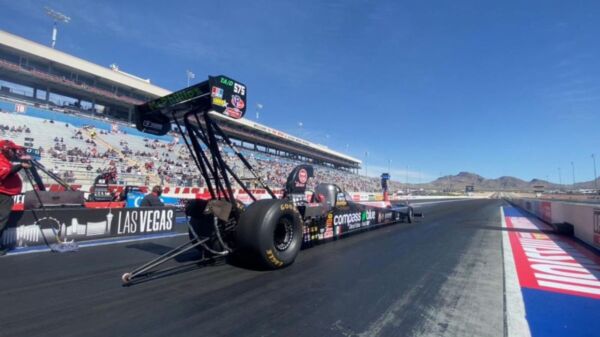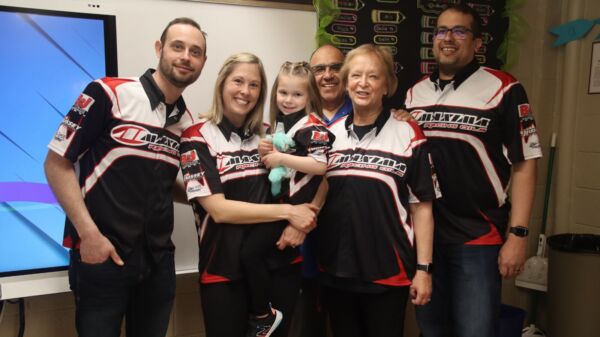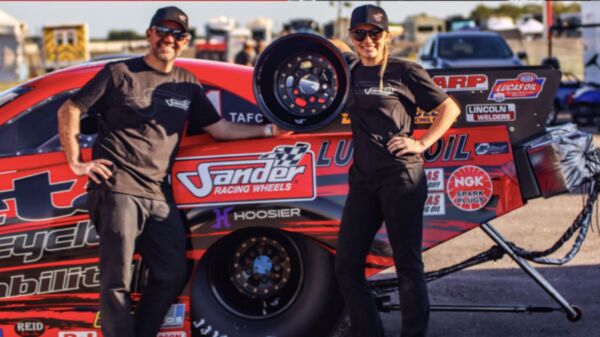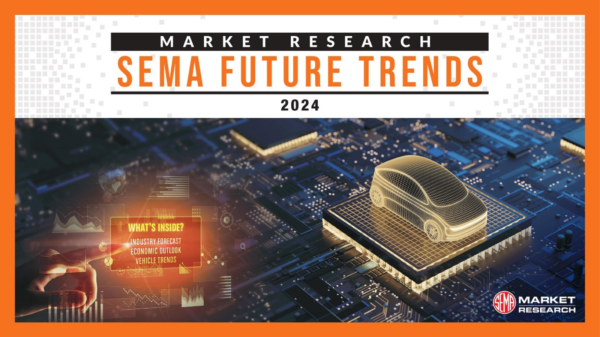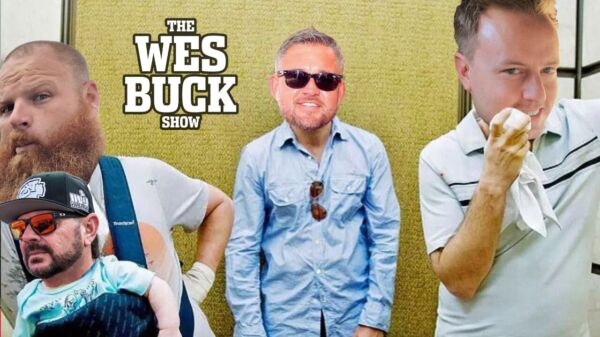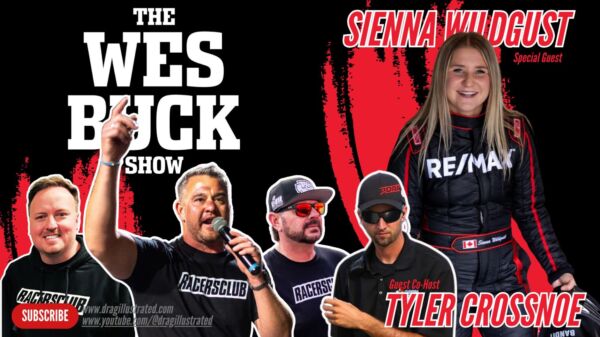Dr. Jamie Meyer arrives at Martin, Michigan’s U.S. 131 Motorsports Park for the NMRA/NMCA Power Festival, the latest stop on the PRI Road Tour. Meyer and a team of content creators pile out of the PRI Road Tour van that has traveled thousands of miles over the last year or so, visiting speed shops, manufacturing facilities, racetracks and various racing events across the country.
The Road Tour is one of numerous initiatives Performance Racing Industry (PRI) has launched since Meyer was named president of the trade show and media company in May last year. It served as a back-up plan for the PRI Show in Indianapolis, which was canceled due to the pandemic. The content creation team captured countless photos, hundreds of hours of video, and numerous other pieces to help companies in the industry share the stories of their products and services that would typically be shared with customers in person at the trade show.
[Editor’s Note: This story originally appeared in DI #170, the Sportsman Issue, in August of 2021.]
The 2020 tour proved successful, as it’s back this year, along with the return of the PRI Show in December. PRI also announced a new membership drive that allows racing businesses and even individuals the opportunity to join the organization. It’s all part of PRI’s mission to unify and advance the industry through some admittedly challenging times.
“PRI is not just a trade show in December,” Meyer says. “We’ll be the advocacy group for the racing industry. We’re also the content curators that are telling the story of the racing industry. Our job is to sell the entire racing industry and really take it to a level that it’s never seen before.”
Drag racing – and the racing industry in general – gained a major advocate when Meyer was named president of PRI. He previously served in various roles over a 15-year career at General Motors, where he led the revival of the COPO Camaro, E-ROD crate engine, LSX race block and engine line. He also spearheaded Chevrolet Performance’s sponsorship of the NHRA U.S. Nationals and the NMCA, along with bringing the John Force Racing group under the Chevrolet umbrella.
Meyer’s most recent work was in the corporate world, but he started his career in grassroots drag racing in his native upstate New York. He formed a non-profit drag racing sanctioning body called Mom’s Racing that gave street racers a safe alternative at their local drag strips. That led to work with Fun Ford Weekend, World Ford Challenge, and the NMRA, where he served as the lead announcer, racer relations, as well as a freelance writer.
In this interview, Meyer talks about his role as the PRI president, the state of the industry, and what PRI is doing to help the people and businesses who operate in the racing world become more successful.

You became the president of PRI in the middle of an incredibly challenging time for the industry. Do you see that as a setback, or do you see it more as an opportunity to try new things that otherwise wouldn’t have been as impactful during normal times?
The line I use is I don’t really know it any differently. This has been a year for protecting the industry and looking for opportunities to move us forward. I think there have been a lot of setbacks, but there have also been some great opportunities that the industry has taken advantage of.
It’s pretty widely known that racing parts are back ordered and that some of these racing parts manufacturers are having some of the best years in their history. Some of these 50-year-old companies are up 25-40 percent. There’s been some good.
For PRI, it was a huge, huge bummer that we had to cancel the PRI Show, but that was the way the whole world went. Our pivot was the PRI Road Tour, where we took the show on the road and put our content creators in a van. We were on the road for 77 straight days and the team visited 100 manufacturers, capturing content, letting them launch new products, tell their story, and it did amazing things for the industry. That was my biggest concern.
It did great things for PRI as a brand and our social platforms. To give you an idea, over the last 365 days, PRI Road Tour content has reached 65 million unique people. That’s more than a Super Bowl commercial of reaching super-targeted, race-oriented fans that can’t wait to see what’s coming next from the industry. There’s a ton of momentum at PRI right now and we’re just helping this big industry move as fast as we can.
PRI’s new membership program launched earlier this year. What was the idea behind that new initiative?
The membership idea really started more than two years ago when Wade Kawasaki, who was the chairman of the board at SEMA, positioned James Lawrence as the chairman of the PRI task force with the initiative to help the racing industry. I was on the SEMA board and I was on that task force. Wade had placed me there to work with James. I never imagined it would evolve into having the opportunity to be the president of PRI.
The initial work from that task force pointed us in the direction of PRI being the brand that all of the racing industry could come together through. If you think about the racing industry, there’s all these different groups. You serve the drag racing side, but there’s an equal amount of circle track racers, a little bit less road racers, drifters, karting, and we can even say the video game racers on iRacing and things like that. Our goal is to bring those folks together in one common organization.
We spent the better part of two years working with the SEMA board of directors looking at multiple models. It just has happened that we have the EPA cracking down on race parts manufacturers, then the pandemic.
PRI launched an ambassador program where we hired three experts on racing that were literally going track to track asking, “Are you guys OK? What can we do to help?” There were a number of the mom-and-pop-owned racetracks that had never even talked to their local health officials and never knew why they were being shut down and lumped in with concert venues. There was a lot of work done there on the political side that taught us how much the racing industry really needs representation.

PRI’s new membership program allows individuals like NHRA Top Fuel star Antron Brown to become members of the organization.
On the political side of what you do, the RPM Act has become a major topic. How is the RPM Act going to impact the industry? How is PRI working to avoid any issues from the federal government?
We’re seeing a big impact right now. This goes back to when Scooter Brothers was the chairman of SEMA and all the great work that [SEMA President and CEO] Chris Kersting has done to get this industry ready for what they had perceived as this day, which is an interpretation of the Clean Air Act where race cars cannot be built from street cars. The RPM Act protects the transition of a street car to a race car in its simplest form.
In drag racing, I know the hardcore, heads-up guys have dedicated chassis and bodies, but my estimate is 90 percent of the racing world is made up of street cars that have been turned into race cars. It is the industry. That’s why getting the RPM Act passed is so important. It’s been a six-year battle. We’ve gotten better, but every time Congress ends and we have a new administration come in, the books reset and you’ve got to introduce that bill again. We’re in the middle of that right now. It’s been introduced in the House. It has over 70 cosponsors. It has bipartisan support, which is a really important thing to emphasize.
I know people might be tired of hearing about the RPM Act or tired of sending in letters, but we need to show them that we’re never going to get tired and we’re never going to give up this way of life. Every time someone sends in a letter or they speak with a representative or one of our lawmakers, it’s super important. Right now, we’re trying to communicate better. We’re trying to be more up front with our representatives, thank the cosponsors, try to get those folks that are middle of the road over to see how important the racing industry is, then give that push for what we think is an obvious clarification of the Clean Air Act.
Yeah, I know we’ve been hearing about the RPM Act and these threats from the EPA for a few years now, so some people might not feel a sense of urgency to get behind this. But this is something threatening our industry right now, right?
Yes. When I was in Colorado, I sat down with Brent [Leivestad], the owner PFI Speed. Brent is a Honda drag car builder. They build thousand-horsepower Hondas that run eights in the quarter mile. They’re big PSCA supporters. We believe this is an example of the EPA overreach that Chris Kersting and Scooter Brothers warned us about a decade ago.
This is a speed shop or a race shop like hundreds across the country. He builds race parts, he sells race parts, and the EPA just fined him $180,000 for selling 37 controllers to 37 customers that are building Honda race cars. We’re going through the process of documenting this with Brent. He’s got every customer affidavit, pictures of the cars, where the EPA never did the research, never looked into it. They just saw that this was a guy who was selling parts on the internet and it did affect the emissions system. They fined him. [PFI] has been offered, basically a shakedown, of $18,000 to pay the fine in 30 days or it will go back to the $180,000.
As you know, these guys run on a pretty thin budget. It’s endangering that specific race shop, but the big impact here and what people really have to be aware of is the manufacturers are at risk. The manufacturers are already stopping the manufacturing of race parts. We will not be able to build race cars if we don’t get the RPM Act passed. Or you’ll be hand-building headers in your driveway like we did in 1956. That’s where we’re at as an industry right now.
You have a behind-the-scenes look at the industry and the companies that operate in it. What are you seeing and hearing from these companies?
I think it comes down to one word, which is fear. There are big shops right now – the biggest names in the industry – that are fearful they’ll be shut down by the EPA for modifying vehicles. If you break it down into the different segments of the industry, you’ll know that the diesel guys didn’t do themselves any favors by modifying street-going trucks and going out and rolling coal and shooting videos. That’s how they got in trouble and that’s what signaled the EPA that something was going on here and why they hired more agents to investigate us further.
I have a 2019 Z06 Corvette. I like to drag race that car. I would like to do little modifications to it like we have been doing for the last 70 years in this country. As a whole, it’s not going to impact the environment. We’re at the precipice of the EPA stopping modifications of vehicles. Right now. Within this administration.

Looking ahead at the PRI Show, how important was it to return to an in-person PRI Show this year?
I think it’s huge. I think it’s a huge part of any serious race team or manufacturer’s year to be on the floor in Indianapolis on December 9-11. It’s going to be a landmark event. We’re at 970 exhibitors already. We’ll be over a thousand, maybe 1,100 exhibitors back in Indianapolis. The city has recovered very quickly. They just lifted all health plans requirements. We will follow the city guidelines, but there won’t be any extra health measures. Read that as you’re not going to have to wear a mask if you don’t want to.
What can attendees expect from the PRI Show this year? How will it look different from past shows?
The show’s going to be big. We’re going to add some new elements to the show for the first time. We’re going to have an EV racing area for the people who are super interested in electric racing. We’re going to have an iRacing area.
We’re going to have a content creator area. We think it’s so important to tell the story of racing. We’re going to bring together the manufacturers of the cameras and the GoPros and all the gear content creators use to tell the story. We’ll also have some content creating experts running seminars.
We’re going to have a central area where we’ll really tell the story of why membership is so important. The membership opened for businesses in March, then on July 13th, we opened up individual memberships, which is tied to attendee registration. You will need a membership to attend the PRI Show. This year we do have a complimentary membership level, but we really hope people will take a good look at the $40 level. We have a couple other packages if people want more from their PRI experience.
We think it’s going to be a great show. We had 65,000 people in Indianapolis two years ago. We think we’ll be north of that number in December. The racing industry is just so hot right now.


